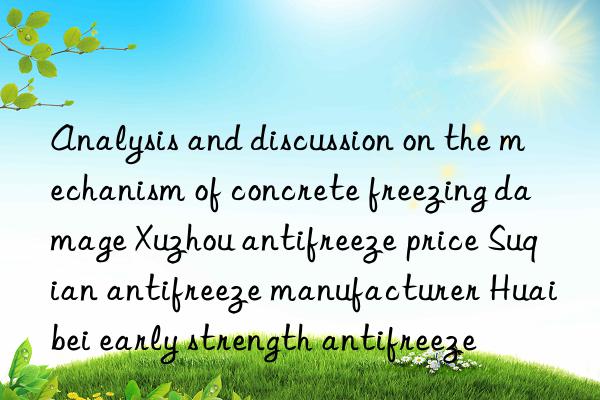
There are three important conditions for concrete to be damaged by freezing, namely humidity, water and the pore condition of the internal structure of concrete. These three conditions are indispensable.
1. Temperature is a necessary condition
When the temperature drops below 0°C, it promotes the transformation of the water phase into ice. After the water freezes, the volume expands by 9%, causing the internal structure of the concrete to be destroyed. . Water mainly depends on the conditions of construction and use. During construction, the water-cement ratio is large and the moisture content of concrete increases, causing the concrete to suffer severe freezing damage.
2. The pore state of the internal structure of concrete
The pore state of the internal structure of concrete is determined by the concrete mix design and construction level. Improper design and construction will increase the porosity inside the concrete, make the pore diameter larger, and increase the free water content, resulting in serious frost damage to the concrete.
Concrete is a porous material that forms pores of different sizes and interconnected capillary channels during and after hardening. After these pores and capillary channels are filled with water, when the temperature drops, the freezing damage to concrete can be summarized as follows:
When the temperature drops below 0°C, the free water in the capillary pores inside the concrete begins to freeze. Volume expansion;
The freezing of structural components starts from the surface and gradually develops toward the interior. After the water on the surface freezes, it expands due to freezing, sealing the unfrozen water inside and pressing it toward the interior along the capillary channels;
With the development of freezing, the frozen volume becomes larger and larger, causing the internal unfrozen water pressure to become higher and higher. When the internal pressure increases to exceed the tensile strength of the concrete, the capillary pores will burst, resulting in Microcracks; water flows into the crack where the crack occurs under a certain pressure. At this time, the hydrostatic pressure inside the capillary pores decreases and the damage is alleviated;
After that, the freezing continues to develop deeper and the water pressure continues to increase. When it reaches a certain level, the cracks may continue to expand and eventually new cracks will develop. The cracks will continue to develop and increase, causing damage to the interior of the concrete;
When the cracks remain inside the concrete When there are pores that are not filled with water, or a large number of pores are introduced inside the concrete due to the addition of air-entraining agents during construction, the pressure of unfrozen water under pressure will flow into the pores through penetration or capillary pores, causing the static water to flow into the pores. The pressure is reduced, thereby reducing cracks within the concrete and improving the frost damage resistance of the concrete.
<img src="/upfile/202210/2022101830586343.jpg"/
 微信扫一扫打赏
微信扫一扫打赏

